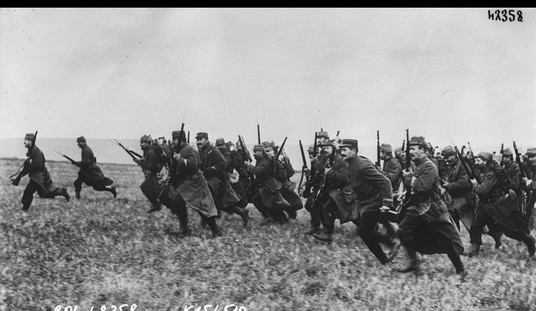
In contemplating topics for this weekly feature, the RedState Department of History tries to avoid making every week about militaria. However, this week, it’s just too hard to resist.
It turns out lots of things happened on this date – Franklin Roosevelt declared a state of emergency after the Germans sank the Robin Moor on this date in 1941, which also featured the sinking of the battleship Bismarck. One year later, British-backed assassins killed Heinrich Himmler’s right-hand troglodyte, Reinhard Heydrich. In 1905 on this date, the Japanese Navy eviscerated its Russian opponent at the Battle of Tsushima Strait, possibly the most one-sided naval battle in history.
But for pure drama, nothing can top the beginning of Operation Dynamo on this date in 1940.
You surely know the story even if you don’t know the operation’s name — it was the evacuation of Dunkirk by British naval forces.
On the 10th of May, German forces commenced the invasion of France and the Low Countries and less than three weeks later, they had the entire British Expeditionary Force pinned in Dunkirk with its backs to the sea.
Britain’s new Prime Minister, Winston Churchill, had told the populace to expect hardships, but even he couldn’t have imagined what lay in store.
An evacuation was ordered with the goal being to get 40,000 troops across the English Channel, whose cooperation in terms of weather was absolutely vital.
Evacuations began on this date in 1940, with 8,000 troops embarked, but as any student of history knows, the eventual result was much greater than had been anticipated.
Vice Admiral Bertram Ramsay was in charge of the evacuation, which was announced to the British public on May 29. That brought about a remarkable armada of private craft — fishing boats, trawlers, steamers, ships of all kinds — soon known as the “little ships”. Shipmasters refused to give their craft over to Navy control because they wanted to be part of the effort.
The smallest boat to take part in the evacuation was the Tamzine, a 14-foot open-topped fishing boat that is now on display in the Imperial War Museum. A paddle steamer known as the Medway Queen made seven trips back and forth during the evacuation and removed 7,000 men to safety.
Most of the British Expeditionary Force and a good portion of the French First Army were eventually evacuated off the beaches and across the Channel, which had remained smooth as glass for most of the operation.
Dunkirk surrendered on June 4, but Churchill was able to tell the House of Commons that the armada had evacuated 338,226 British and Allied soldiers. He also mentioned, of course, that evacuations do not win wars, but the famed “Dunkirk spirit” was born that week and was often called upon by Churchill to keep morale up during the coming dark months, which included the Battle of Britain and the Blitz.
It didn’t come without cost — the German Air Force sunk over 200 ships and killed an estimated 3,500 soldiers and sailors during the evacuation. The British Army lost 2,400 artillery pieces, 65,000 vehicles and 68,000 tons of ammunition.
But Britain would survive, and the evacuation of Dunkirk allowed the British Army to rebuild around a cadre of experienced soldiers.
Happy Sunday and enjoy today’s open thread!













Join the conversation as a VIP Member